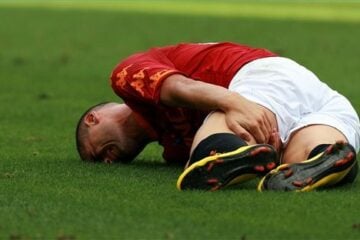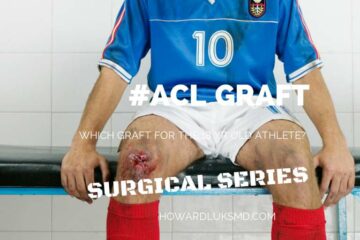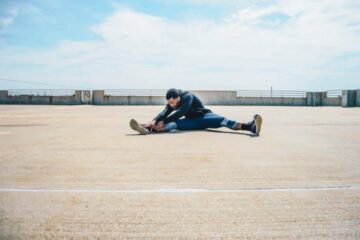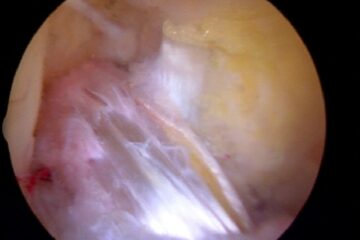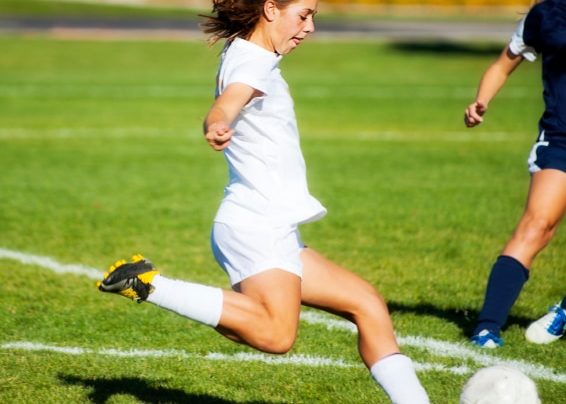
Upwards of 400,000 people will tear their ACL this year. Many of those athletes will choose to have surgery for their ACL injury in order to allow them to return to sports. For the last few decades the surgery we preformed, and still perform today is an anatomical reconstruction, or replacement of your torn ACL. Dr Martha Murray at Boston Childrens Hospital has been studying various techniques over the years to see if we could potentially repair the ACL tear, instead of needing to reconstruct the ACL. The newest technique currently being studied is called the Bridge-Enahanced ACL Repair or BEAR procedure.
The ACL is one of the most commonly injured ligaments in the knee. Ligaments attach bone to bone. So the ACL attaches your femur or thigh bone to your tibia, or shin bone. The ACL stabilizes the knee with cutting, twisting or turning activities. Tears of the ACL typically occur with turning pivoting or twisting. Most of these injuries are non-contact in nature.
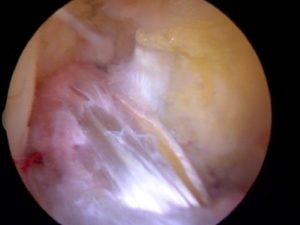
Prior to the Bridge Enhanced ACL Repair technique other procedures to repair the ACL were tried… but failed. Those procedures failed because the ACL could not be repaired to it’s normal position and it didn’t heal well enough to the femur. This produces a weak ACL repair which eventually failed.
What Dr Murray has proposed and has actively studied with the Bridge ACL Surgery is whether or not a sponge, injected with your blood can improve the healing of the ACL back to the femur in such a way that the strength of the repair mimics the original strength you had in your ACL.
There are many theoretical advantages to the Bridge ACL Repair technique. First, in order to perform a standard ACL reconstruction we need to use a graft. A graft is a piece of tissue from your patella tendon, or from a hamstring tendon around your knee from which we can build or reconstruct a new ACL from. If the Bridge ACL technique proves to be successful then this procedure will eliminate the need for a graft harvest.
The second, and likely more important potential advantage will be if this technique helps prevent arthritis from occurring after an ACL tear. Right now, if you tear your ACL and undergo a routine ACL reconstruction you will run the risk of developing osteoarthritis over time. Many of us feel that some of the risk of developing osteoarthritis is because of the nerves that are lost when the ACL tears. Your normal ACL has nerves in it which help the body sense the position of the knee. Those nerves never regenerate after a routine ACL reconstruction. If the Bridge ACL Repair surgery enables those nerves to reform or regenerate then it is theoretically possible that the risk of developing osteoarthritis will diminish. Unfortunately, to prove that the Bridge ACL technique prevents arthritic degeneration will take many many years of study. The primary investigators will need to follow patients who have the Bridge surgery for 5-10 years to see if this new technique influences whether or not osteoarthritis will occur.
Many patients from around the world are searching and looking for information on the new Bridge ACL Surgery Technique. It is important to understand that this is not yet a mainstream technique. Years of research and study are necessary to see if it works as intended. It is also very important to understand that only a certain number of you will even qualify to be a candidate to consider the surgery. The problem is, in order to repair your ACL it must have torn in a very specific place. Your ACL can tear from its attachment to the femur or from the tibia. The ACL can also tear in the middle. Right now, the BEAR technique is only being used to repair ACL tears which occur at the attachment to the femur. In addition, the tear must be relatively acute. That means that it must have recently occurred within the last month. Why is that? When the ACL tears, the torn pieces eventually eventually atrophy and dissolve away. That means when we look in your knee you no longer have any ACL tissue to be repaired.
Dr. Murray is still performing trials at Boston Childrens Hospital. They are looking for people between 15 and 35 and the tear must have occurred less than a month ago. If chosen to participate, you will enrolled in their trial … BUT you will be randomized to one treatment group or another. That means that you might receive the BEAR procedure, OR you might have a routine ACL reconstruction .. and they can not tell you which one you had. That is how research is performed.
Dr Murray deserves a lot of credit for all the work she has done in this area. This is the first in what will be many procedures designed to repair your ACL tear. ACL surgery will transform over years just as it has transformed over the past two decades. For now, a routine ACL reconstruction stands a good chance at restoring stability to your knee and enabling you to return to the playing field.
I will keep you updated as Dr Murray’s research in the BEAR -ACL Repair Surgery evolves.
Consider reading :
Do you have questions regarding an Orthopedic injury or longevity?
Do you want to talk to an expert who can listen to you for 45-60 minutes and explain the options in detail?
Dr. Howard Luks offers remote guidance sessions to review your X-ray or MRI images and explain your options.
Dr. Luks has also received hundreds of requests for educational sessions on the topics discussed in his book, Longevity Simplified.

